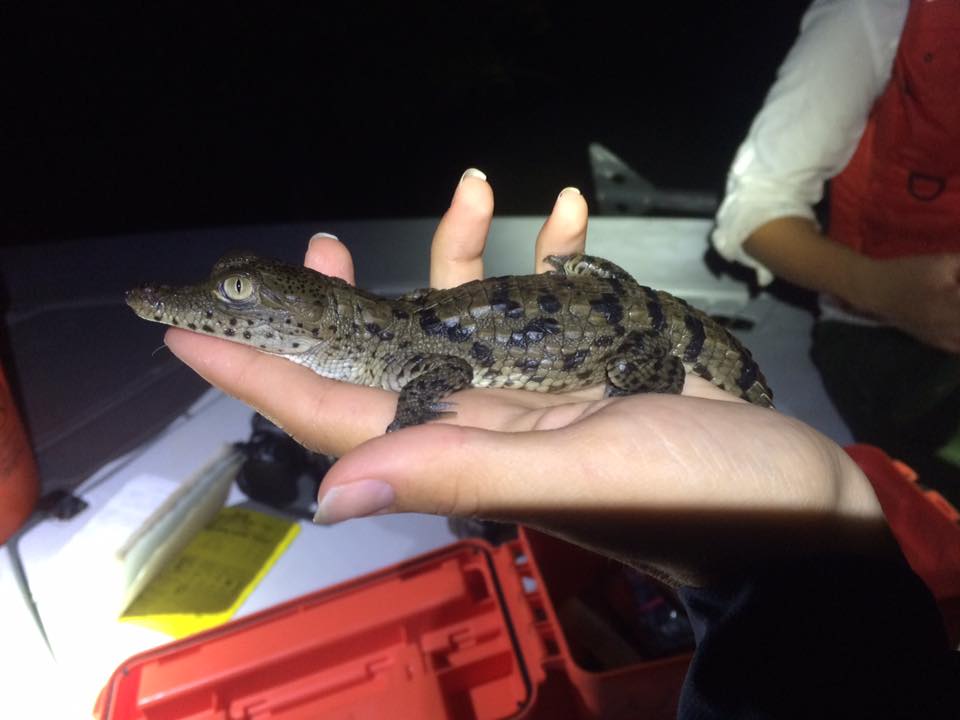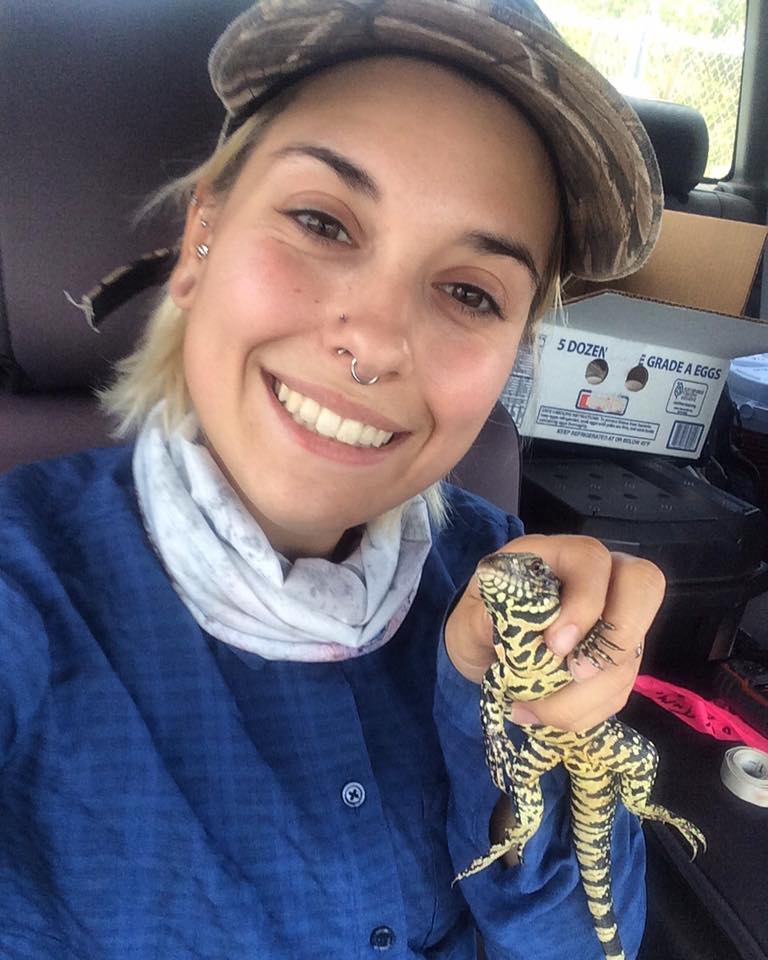|
American Crocodiles (Crocodylus acutus) live in coastal areas from the Caribbean to south Florida. They live in salt and brackish water throughout ponds, creeks, mangrove swamps, and can occasionally be found in freshwater canals in South East Florida. These reptiles are ectothermic, which means they rely on the external environment for heat to regulate their body temperature. In cool air temperatures you can see them laying out in the sun to warm up, and once warm enough they will move to cooler areas. This cyclic movement between warm and cool locations is a 'shuttling' behavior that helps them to maintain their temperature for ideal body functioning.
These large animals are threatened by predation, low hydrologic conditions, and habitat loss. There are no natural predator s of adult crocodiles besides humans, but hatchling crocodiles have a very high death rate and are preyed upon by wildlife including birds, raccoons, and crabs. Hydrologic conditions of the water are damaging to crocodile nests. There are extensive drainage programs in south Florida that cause nests to become too wet or too dry, which results in egg-death. The final factor, habitat loss, was heavily impacted by the development of the Florida Keys. The Keys provided a large area of suitable habitat for crocodiles, but development for tourism has caused that area to become polluted and too disturbed to be useful to the crocodiles. World wide the crocodiles are listed as being endangered, however, the crocodile population in Florida has been doing well and was moved from being federally endangered to threatened. This decision was made due to some data that has been collected on the crocodile population over the past several years which showed an increase in nesting females as well as overall population size. The crocodiles are not in the clear yet, and are still being monitored for progress or setbacks. I personally have been able to take part in the collection the data that is being used to monitor the crocodile populations in south Florida. The populations are monitored throughout the year to make sure that they are doing well. There is much data collected on these animals, and I will share the main data types with you to show how we are keeping track of the population's health. There are surveys for population counts that occur. Boat go out into the salt water and brackish areas of south Florida and the coast where crocodiles are surveyed using spot lights. The spotlights cause the eyes of the crocodiles to light up, and then that crocodile is recorded as an individual, an its size is estimated and recorded. This is done four times a year and give us estimated population counts for each area surveyed. After theses spotlights surveys occur, captures are performed to record weight, length, and sex of individual crocodiles. this gives us information on the health of the population and accurate sizes to compare to the estimated sizes from the spotlight surveys. A final collection of data occurs during the nesting season. Nests are found by surveying beaches for crocodile activity via helicopter. From the air you can see where crocodiles have crawled in and out of the water to nest. Once beaches are identified, ground surveys to find and flag nests are conducted. Nests are marked by GPS point, and in some cases they will have a datalogger placed near the nest to record data on nest temperatures as the eggs incubate. Surveys are conducted to monitor the status of the nests while they incubate, and once hatching is deteced then survesy for hatchlings occur. The hatchling surveys consisted of spotlighting for baby crocodiles, catching them, counting them, measuring and weighing them, and giving the unique number so we can keep track of them if we catch them again. Recapture data is important for long-term studies and monitoring of populations so that you can tell which animals survive and which ones do not. This data is very important to make sure these crocodiles do not need to be placed back on the list of federally endangered species. Monitoring them is the best way to ensure their population is on the fast track to recovery, and not temporarily recovering only to begin declining again. Please remember to leave crocodiles alone if you encounter them in the wild. The photo above was taken with permission to handle the crocodiles for research, but touching them in the wild is illegal. Any person who touches or harasses crocodiles in the wild can be lawfully prosecuted, but it is also important to remember that they are dangerous and can hurt you - so you don't want to touch them anyways! More information on the American Crocodile can be found below: American Crocodile: Species Profile Status and Conservation of the American Crocodile in Florida: Recovering an Endangered Species While Restoring an Endangered Ecosystem Frank J. Mazzotti and Michael S. Cherkiss, 2003 (PDF, 1.9 MB) The Nest Environment of the American Crocodile Peter L. Lutz and Ann Dunbar-Cooper, 1982 (PDF, 5.63 MB) Osmoregulation of Crocodiles in Everglades National Park William A. Dunson, 1980 (PDF, 5.43 MB) Feasibility of the Establishment of a Captive-Breeding Population of the American Crocodile John L. Behler, 1978 (PDF, 29 MB)
0 Comments
Leave a Reply. |
About the blogFerrets and Friends, LLC has four writers bringing you information on a variety of topics from pets to wildlife, education to conservation, and from new developments in our business to information about our industry. Learn something new each week! Archives
August 2020
Categories
All
|


 RSS Feed
RSS Feed